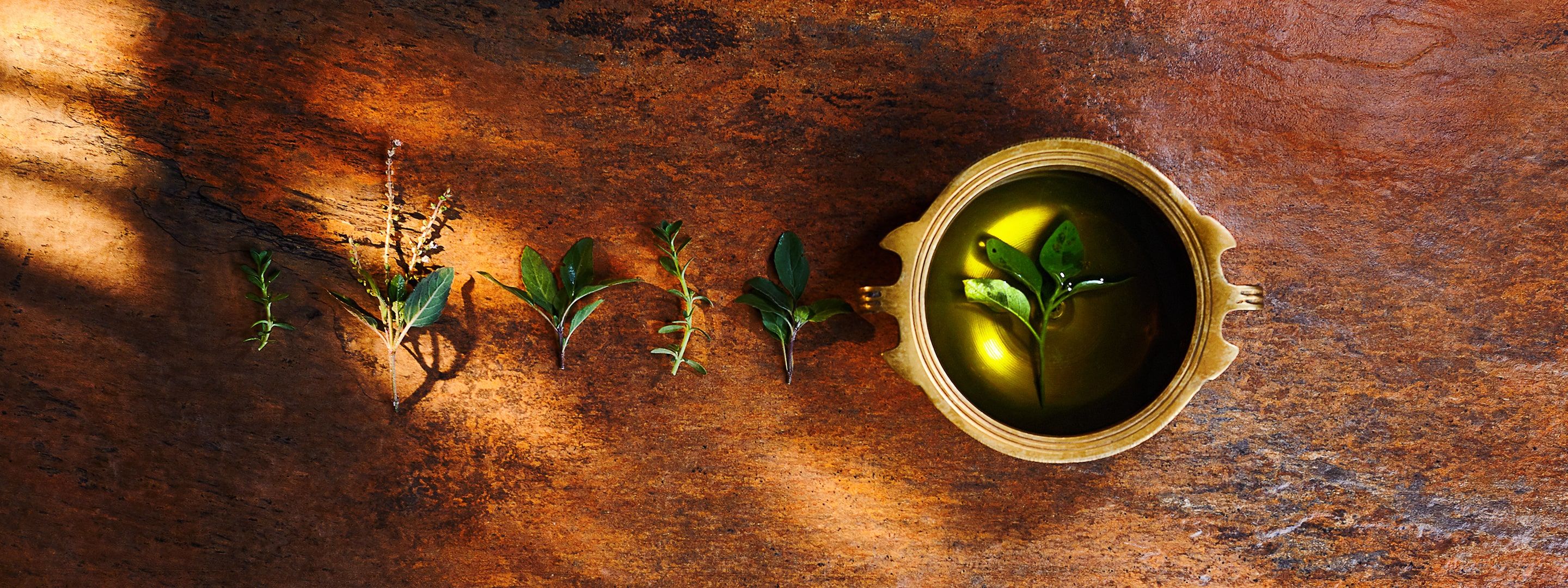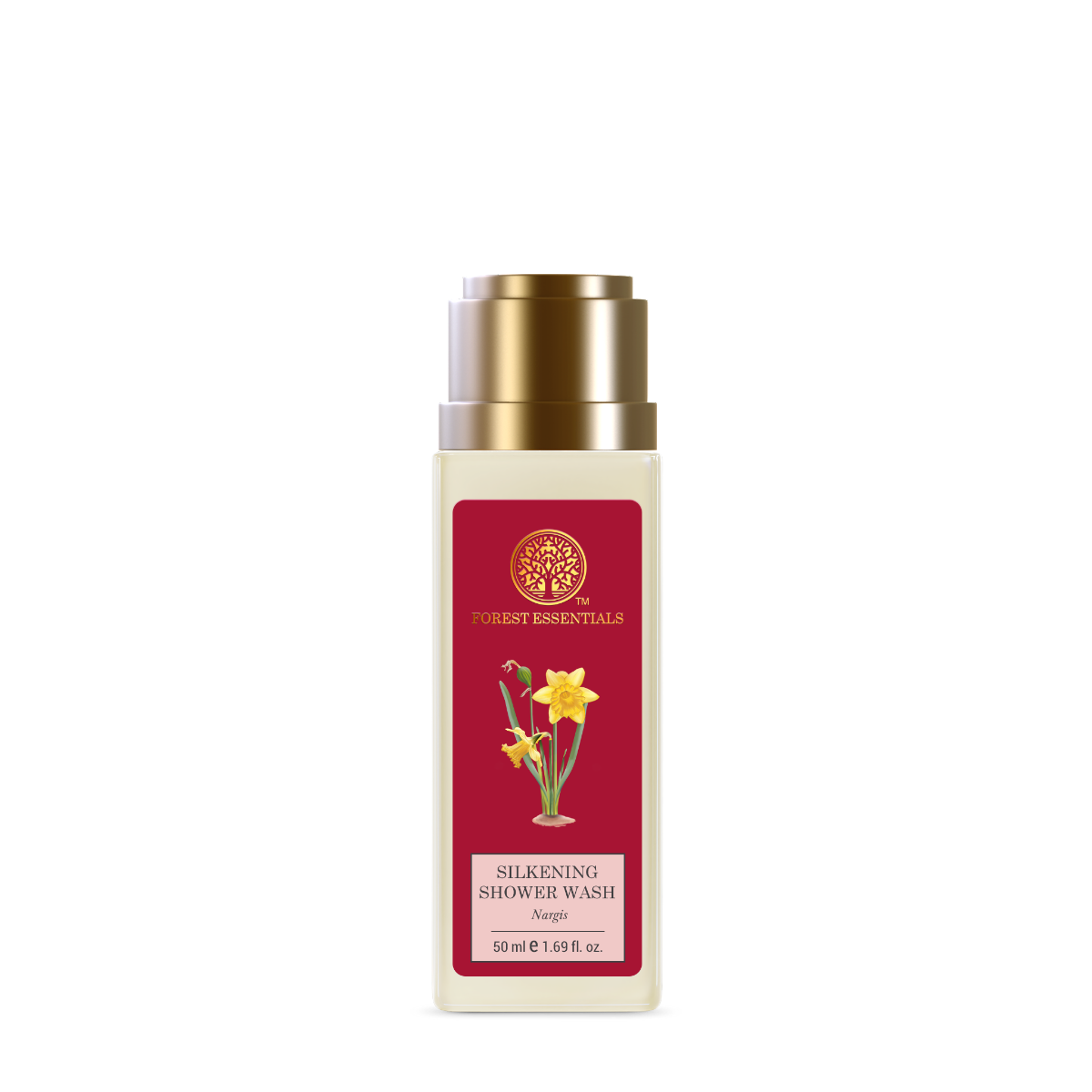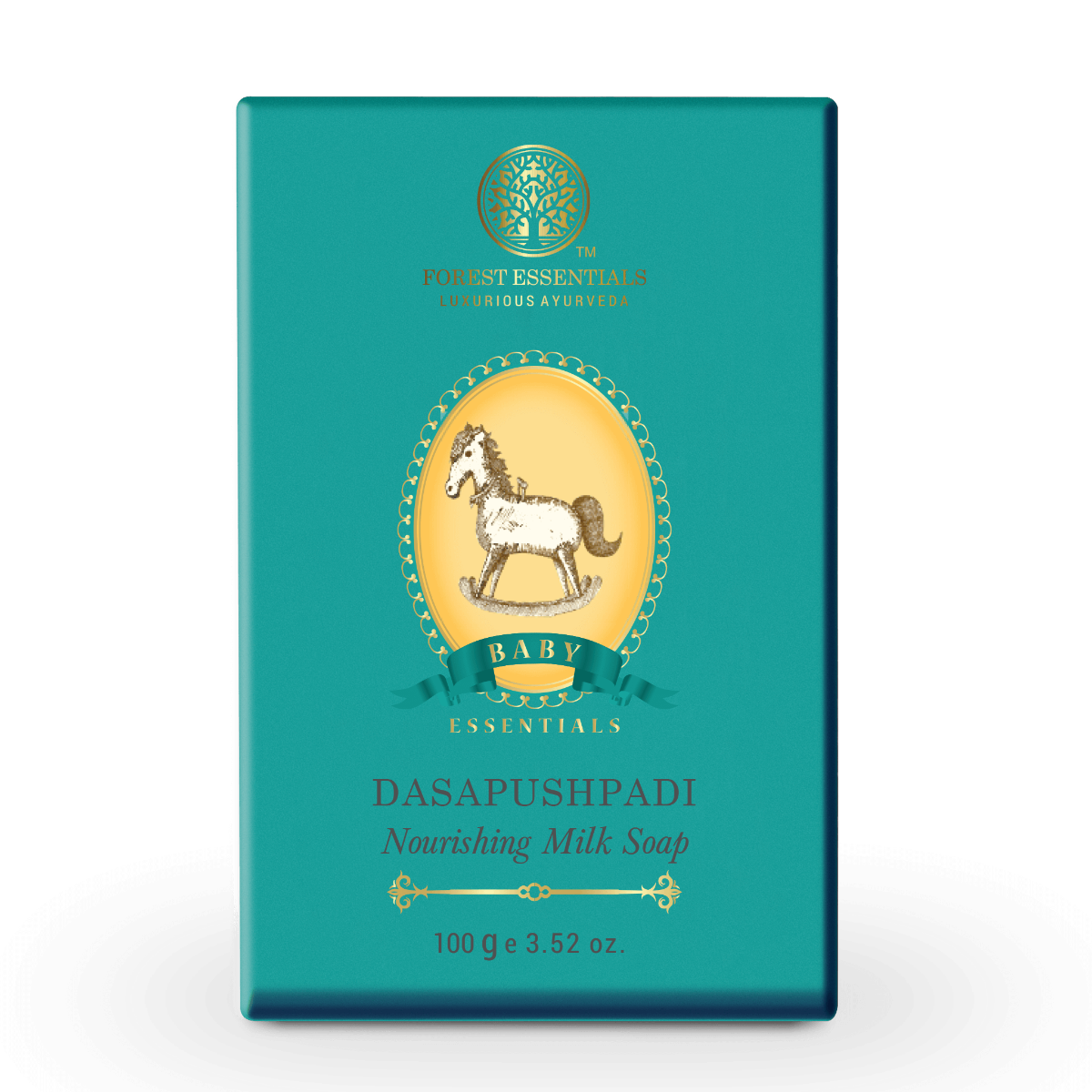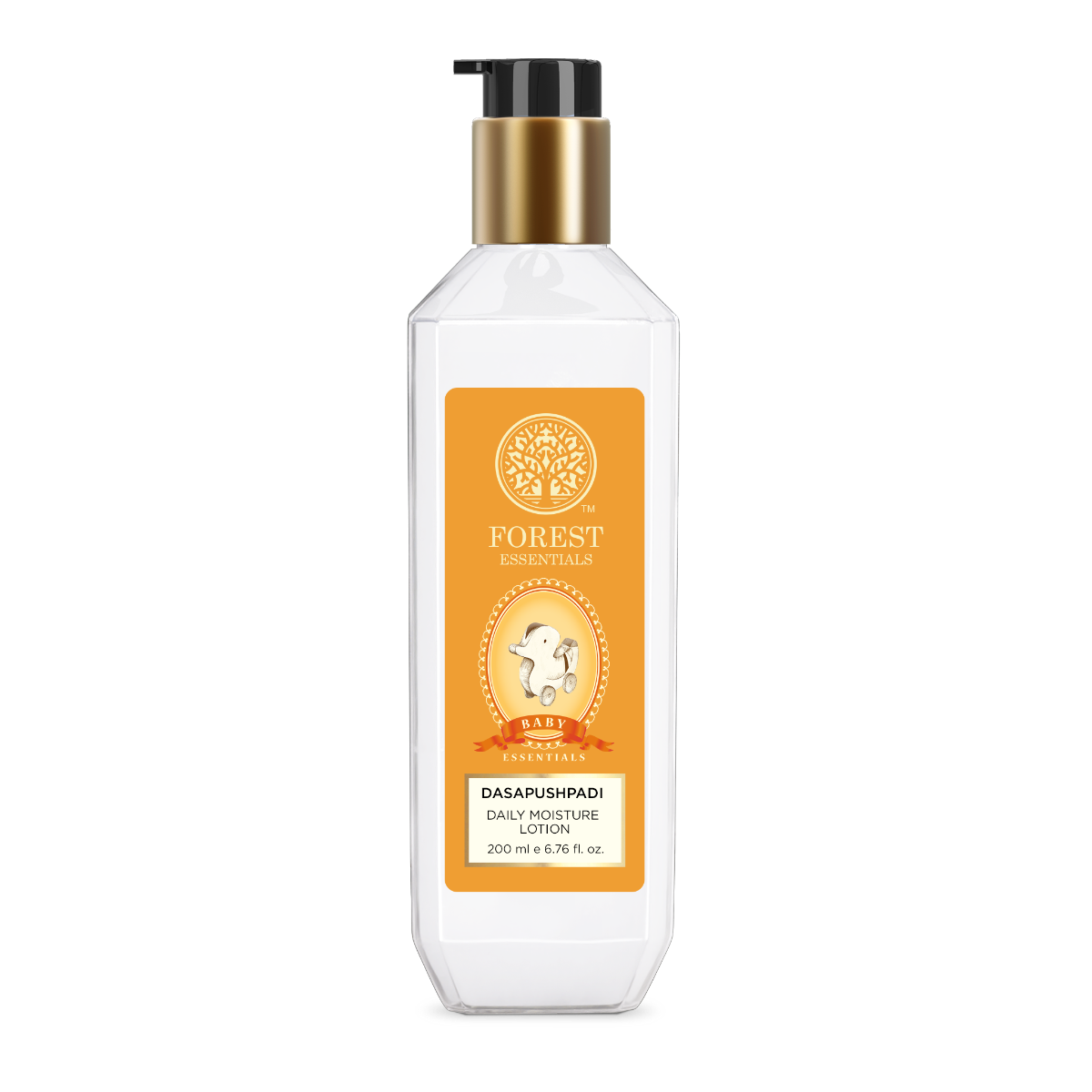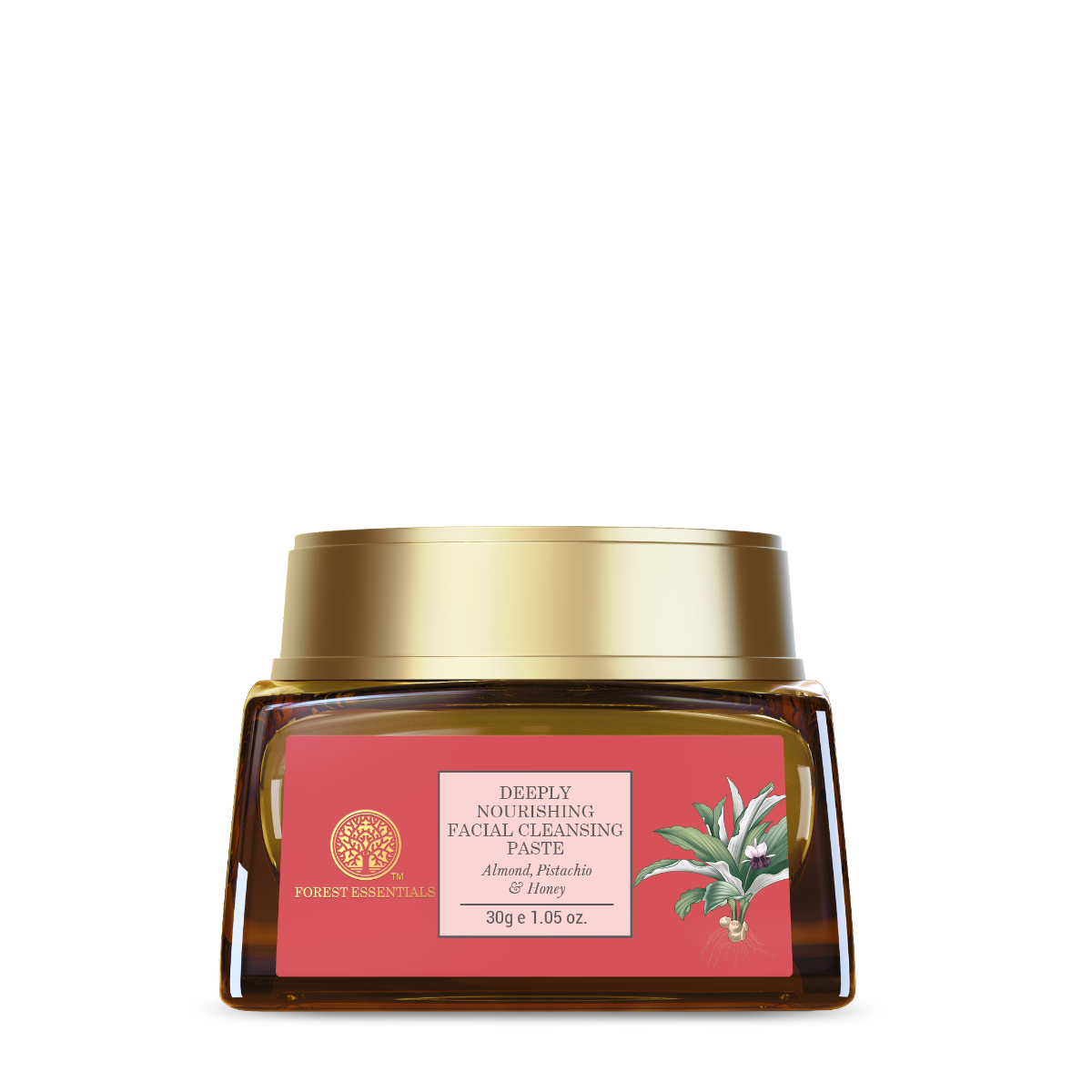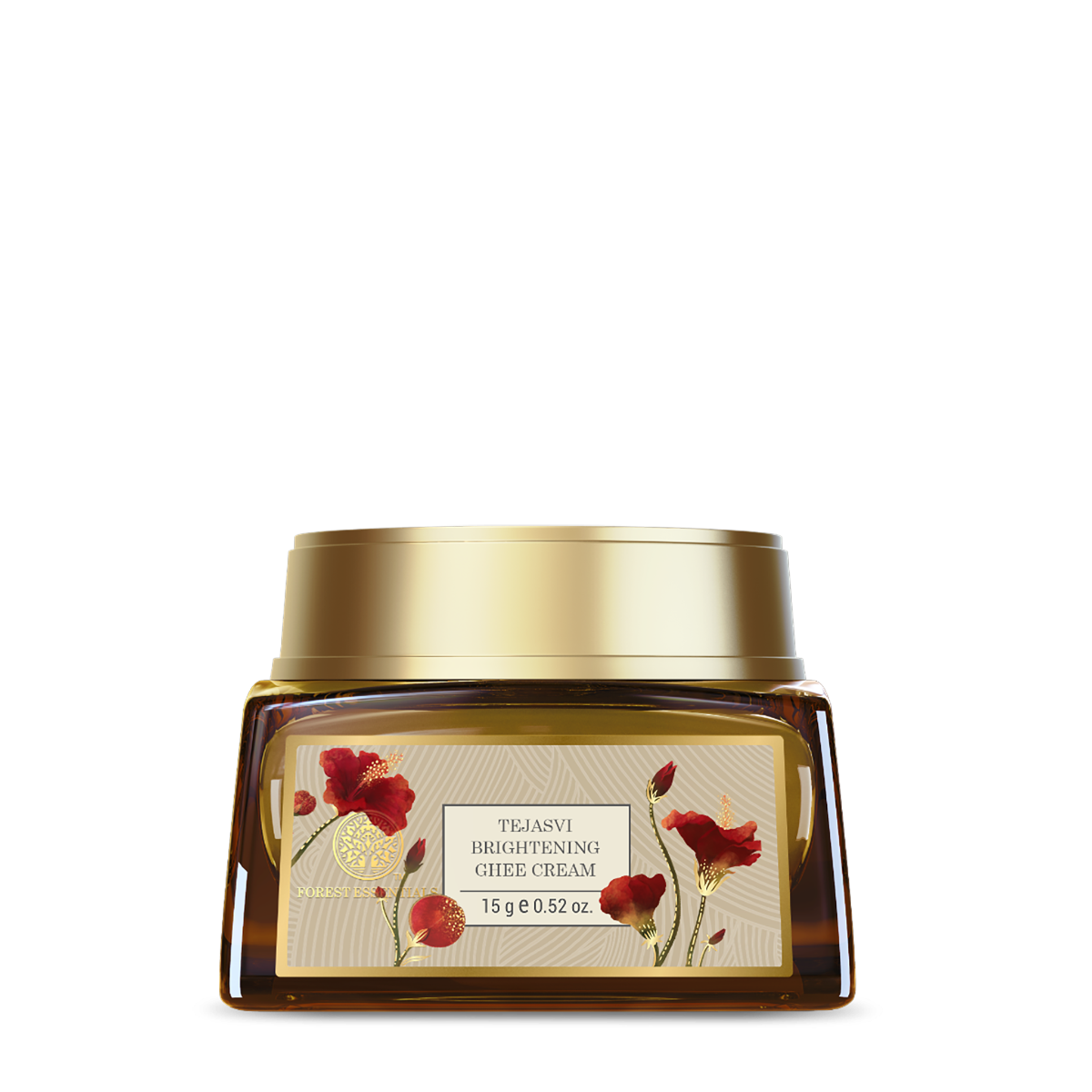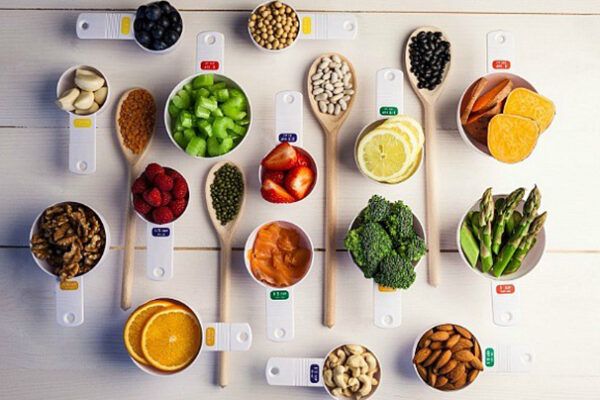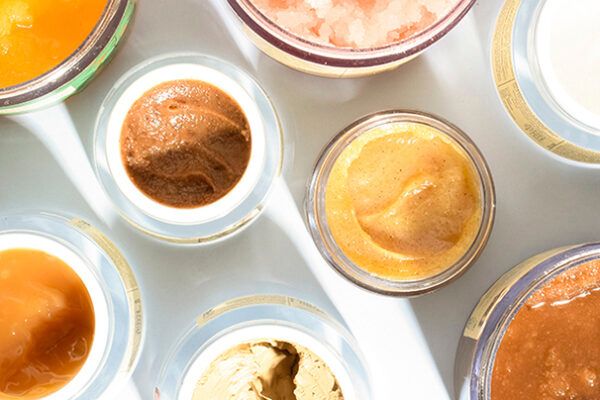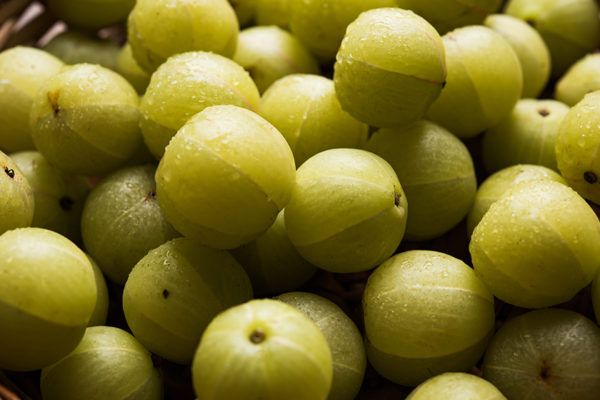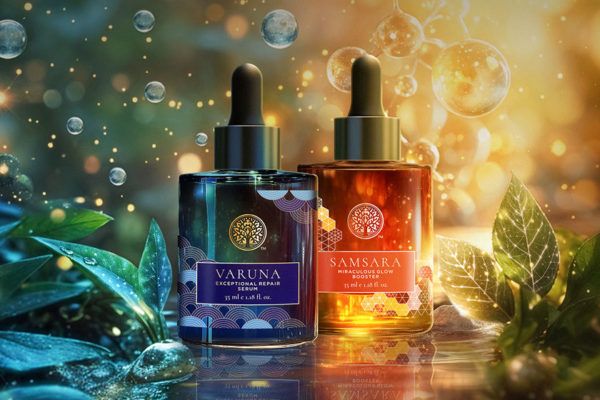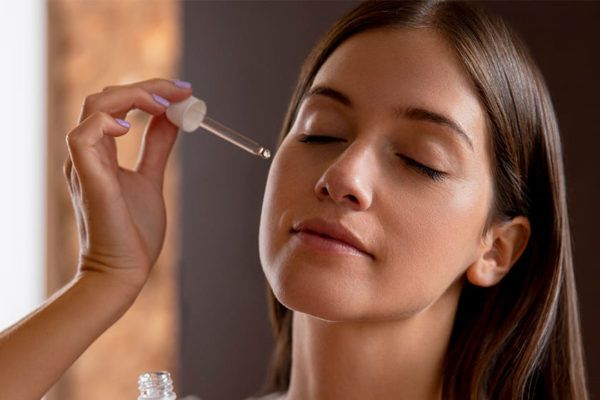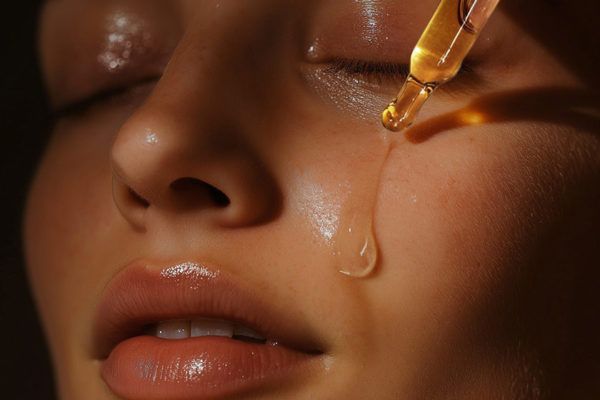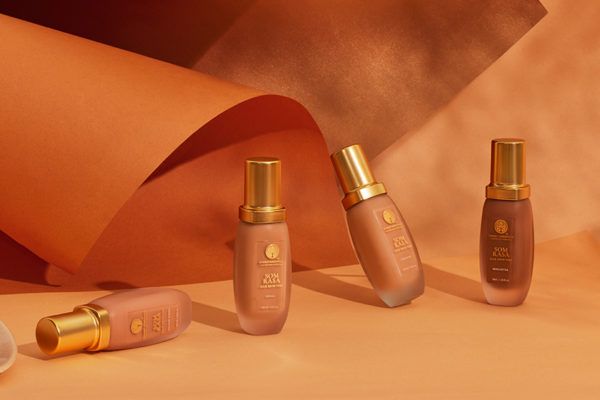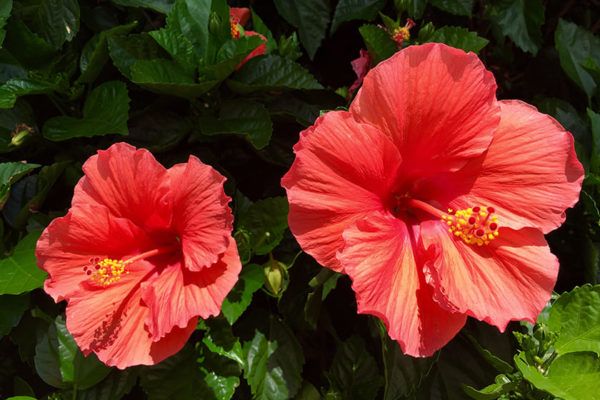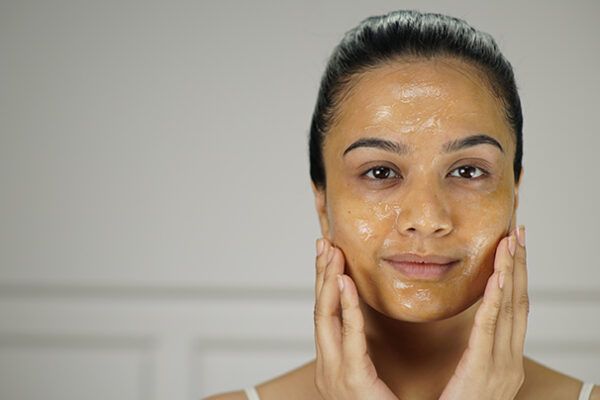Introduction
The term Ayurveda is derived from the Sanskrit word, āyurvedah – ‘ayuh’ means life and ‘veda’ means knowledge. Attributed to Dhantavri, the physician to the Gods in Hindu mythology who received it from Lord Brahma (the Indian God of all creations). The knowledge of Ayurveda was handed down from Lord Brahma to Daksha Prajapati, onto the Ashwin twins (the divine doctors), and then passed to Indra. Sage Bharadvaja volunteered to go to heaven to receive this wisdom from Indra, and so became the first human to receive the knowledge of Ayurveda. He passed it to Atreya, then onto Punarnavasu, and finally Agnivesha. Ayurveda was recorded more than 5,000 years ago in four sacred texts called the Vedas. They were the Rig Veda (3,000-2,500 BCE), Yajur Veda, Sam Veda and Atharva Veda (1,200-1,000 BCE). The history of Ayurveda states that all areas in one’s life impact their health and holistic well-being and the Vedas cover a wide variety of topics, including health and healthcare techniques, astrology, spirituality, art, and human behaviour.

Origin of Ayurveda
The origin of Ayurveda goes back to about 800 BCE when the Vedas were rich in magical practices for the treatment of diseases and banishing demons that are traditionally supposed to cause those diseases in the first place. Also, known as the “Science of Life”, Ayurveda is a way of living – striking a cohesive balance and empowering your external and internal environment in utmost harmony. In Ayurveda, the entire universe consists of five basic elements: Vayu (Air), Jal (Water), Aakash (Space), Prithvi (Earth), and Teja (Fire). These five elements — referred to as the Pancha Mahabhootas — are believed to serve the diagnosis for all treatment and illnesses of the human body and mind successfully. Vata Dosha, Pitta Dosha, and Kapha Dosha are collectively called the Tridoshas or Ayurvedic dosha, and they control the Ojas of the body. A Sanskrit term meaning ‘vigour’, Ojas is best understood as essential energy for the body and mind. It not only gives the muscles of our body strength and endurance, but it also protects the health and vitality of cells, thereby influencing all bodily functions and physiological processes. Ojas is said to be situated within the body’s pivotal functioning organ, the heart. It is composed primarily of water and Earth elements. It is often referred to as “life sap” as it is the essence of all the dhatus or tissues of the body.

Three Doshas of Ayurveda
Vata
The first Ayurvedic Dosha, known as ‘Vata’, consists mostly of the two elements – air and space (also known as ‘ether’) and is generally described as cold, light, dry, and rough. Often associated with the winter season, the Vata Dosha is also known as the Vata Season because it’s marked by some of the same qualities that characterise Vata: cold, dry, light, clear, and moving. If our lifestyle mirrors these qualities, we risk depleting our Ojas or the ‘fluid of life’. But if we introduce the opposing qualities, we can revive our Ojas. When it comes to skincare, most of us tend to put more emphasis on the face than on the rest of our body but keeping skin looking radiant from head to toe can also go a long way toward helping you look healthier and feeling more confident. Vata regulates the levels of moisture in the body, so if you do not keep your Vata balanced, you might notice dry, flaky skin, brittle hair and nails. As this skin type needs to be nourished and hydrated regularly, the skincare products used by them should be very nurturing – cold-pressed oils, pure cow’s Ghee or Ayurvedic herbs, which can nourish and rehydrate the skin.

Pitta
The second Ayurvedic dosha, known as ‘Pitta’, is made up of two elements – fire and water, with fire being predominant. The qualities of fire and water are inherently hot, light, sharp, oily and flowing. Since these elements are what create the Pitta Dosha, then Pitta Dosha also reflects these qualities. A Pitta type mirrors the qualities of fire and water in their physical, mental, and emotional bodies. Pitta manifests in the physical body through an athletic build, making it easy for this body type to sustain muscle tone. If weight is gained, it is easy to lose. The Pitta skin type is extremely prone to getting tanned as it is sensitive, soft and warm. Their body type is less tolerant to hot and spicy foods. When out of balance, this skin type can flare up with sunburn, acne and sunspots. Pitta skin type needs a natural barrier from the harsh UV rays of the sun to stay balanced. Cooling, healing Ayurvedic herbs and flowers like Aloe Vera, Rose and Jasmine help soothe and nurture their skin.

Kapha
The third Ayurvedic dosha, known as ‘Kapha’, is essentially composed of Earth and water components. It is heavy, slow, cool, smooth, delicate and cloudy. Kapha provides structure and robustness to all things; it gives the cohesiveness needed to maintain a particular form. Kapha additionally hydrates and lubricates the skin, maintains immunity and safeguards the tissues. Kapha is often associated with water energy, and with love and compassion. Kapha types emanate strength and balance, to such an extent that the Vata and Pitta types are frequently replenished by simply being in their essence. Since their skin type is generally oily and has a tendency for enlarged pores, the Kapha skin type attracts more impurities from the environment. Individuals with this skin type should deeply cleanse their face using products infused with potent Ayurvedic ingredients for internal and external detoxification on a regular basis.

As the Tridoshas work harmoniously with one another, the Ojas can be increased, repaired, and protected by eating pure and nutritious foods and developing a balanced and healthy lifestyle. Ayurveda addresses all aspects of medicine – including diet, herbs, drugs, surgery, bodywork, and its own special clinical procedures like panchakarma. It brings in ritual, mantra (chant), and meditation for healing the mind. In addition, Ayurveda provides lifestyle recommendations for health, longevity, and disease prevention as well as special methods for rejuvenation of the body and mind. It includes the practices of Yoga from asana and pranayama to mantra and meditation, along with a balanced Ayurvedic diet, as part of its healing tools.

Nowadays, we know how mental health is of utmost importance and given the post-pandemic situation how we are well placed in our minds and spirituality. The three Gunas — Sattwa, Rajas, and Tamas — are found in nature and in the mind, paralleling the three doshas of the body. Sattwa, or purity, is the preferred mental state because a person with this quality is calm, alert, kind and thoughtful whereas Rajas and Tamas are considered the mind disruptors as they create indecisiveness, hyperactivity, anxiety, fear, dishonesty and so on.
Just like the Tridoshas, there are seven dhatus (body tissues) and three malas (wastes) that are an important part of Ayurveda. Physicians study intensely about these minor aspects too when considering treatment for their (concerned) patients. It is said that each dhatu is developed from the previous tissue layer starting with Rasa (Plasma).
Mentioned below are the following seven dhatus:
- Rasa (Plasma)
- Rakta (Blood)
- Mamsa (Muscle)
- Medas (Fat)
- Asthi (Bone)
- Majja (Bone marrow)
- Shukra (Reproductive tissues)
And the three malas:
Urine, faeces and sweat help maintain the normal functioning of our body. Without the proper expulsion of these malas the organs fail to function properly and can lead to various illnesses which are acute or chronic.
Interestingly, there are eight branches of Ayurveda:
- Kayachikitsa (Internal medicine)
- Shalakya Tantra (E.N.T)
- Vishagara Vairodh Tantra (Toxicology)
- Kaumar Bhritya (Paediatrics)
- Shalya Tantra (Surgery)
- Bhuta Vidya (Psychiatry)
- Vajikarana (Aphrodisiacs)
- Rasayana (Rejuvenation)
When a person falls ill, the first thing that Ayurvedic doctors or physicians try to understand is the digestive fire or ‘Agni’. It is the most crucial of them all as it helps digest the food and is governed by the above-mentioned doshas. They influence and try to affect the Agni when vitiated or aggravated and when in balance, may lead to proper digestion and prevention of any illnesses.
Tastes play a very important role in balancing the Ayurvedic dosha. Every substance or food in an Ayurvedic diet may have more than one taste out of six tastes, namely:
- Madhu (Sweet)
- Amla (Sour)
- Lavan (Salty)
- Katu (Spicy)
- Tikta (Bitter)
- Kashaya (Astringent)
In the history of Ayurveda, both men and women have been known to immerse themselves in rituals for self-beautification and self-preservation and at Forest Essentials, we believe in the philosophy of the ‘Luxury of Purity’. An Ayurvedic product created from living substances (provided by Nature) such as plants or their extracts contains the vibratory energy that reverberates throughout to constitute life. These contain all the purifying, health-giving and balancing properties necessary to nurture the skin for eternal beauty — and life.

FAQs
What exactly is Ayurveda?
Ayurveda literally translates to the “science of life”, which is an ancient holistic science of alternate healing for more than 5,000 years. It is believed to be the oldest healing science forming the foundation of many therapies. The importance of Ayurveda is to focus on the prevention, healing and longevity of a person. It is considered an “individualised” method of treatment where every person is considered unique and treated with special means of treatment.
Why is Ayurveda not popular?
A very common question is if Ayurveda is such a wonderful science why is it not widely practiced and celebrated? Ayurveda has its own beliefs and culture along with rigid principles that many people find difficult to adhere to. For instance, taking a bitter medicine or following cleansing procedures for a fortnight with hardcore diet restrictions. Also over a period of time, due to the divisiveness of the cultural sentiments and the invasion of Mughals, there was a decline in the acceptance of this long lost science. However, it is being rediscovered and the impact of its re-awakening is astounding, as we see its effectiveness and demand growing in other countries – in leaps and bounds.
What are the 5 principles of Ayurveda?
Ayurveda rests on the basic principles of Tridoshas, Trigunas, Sapta dhatus, Trimalas, and Panchamahabhootas. There are several more which emphasise on Traya Upastamba of Ayurveda which are Aahar (Diet), Nidra (Sleep) and Brahmacharya (Abstinence) to be used in a planned manner.
What is Ayurveda good for?
Ayurveda is a personalised method of analysing people’s constitutions and illnesses; it recommends and provides gentle, natural and effective therapies. Ayurveda relies totally on nature to heal, while Ayurvedic therapies only help in the healing process. Swabhavoparama (recession by Nature) is the method of using herbs, diet, lifestyle, and other therapies to return the mind and body back to their natural state of balance.
What is the main goal of Ayurvedic treatment?
Swasthysya Swastya Rakshanam, Aaturasya Vikar Prashamanam|
The first and foremost aim of Ayurvedic treatment is the preservation of positive health in a healthy person, and to help alleviate diseases and dysfunctions in the body. Ayurvedic treatment considers the individual as a whole and seeks to re-establish harmony between all the constituents of the body and a perfect balance of the tripod – mind, body and spirit. Basically, Ayurveda is health promotive and preventive; curative and nutritive; and all self-contained.
What are the three doshas in Ayurveda?
Ayurveda is one of the world’s oldest forms of holistic medicine and is still widely used today. Combining physical, psychological, and spiritual health, Ayurveda focuses on whole-body healing and states that a person’s Ayurvedic dosha, a type of bodily humour, determines their personality and health. Every person is said to have a unique ratio of each dosha, usually with one standing out more than the others.
For example, a person may be mostly pitta while another may be mostly Vata. Ayurvedic doctors can help you determine your Ayurvedic dosha.
Vata:
Vata consists mostly of the two elements, air and space (also known as ether), and is generally described as cold, light, dry, rough, flowing, and spacious. The Autumn season represents vata for its cool, crisp days.
Pitta:
Known for being associated with a tenacious personality, the Pitta dosha is based on fire and water. It’s commonly described as hot, light, sharp, oily, liquid, and mobile. Summer is known as pitta season for its sunny, hot days.
Kapha:
Kapha is made of earth and water. It can be described as steady, stable, heavy, slow, cold, and soft. Spring is known as Kapha season, as many parts of the world slowly exit hibernation.
What body type do I have according to Ayurveda?
Body type can be determined by the analysis of the Doshas which form the Prakriti (Constitution) of a person. There are several predetermined characteristics of each of the Doshas: Vata, Pitta and Kapha. Those characteristics, when in certain dominancy, decide which constitution a person belongs to and can ascertain which Prakriti the person is.
Who invented Ayurveda?
Lord Brahma (the Indian God of all creations). The knowledge of Ayurveda was handed down from Brahma to Daksha Prajapati, onto the Ashwin twins (the divine doctors), and then passed to Indra. Sage Bharadvaja volunteered to go to heaven to receive this wisdom from Indra, and so became the first human to receive the knowledge of Ayurveda. He passed it to Atreya, then onto Punarnavasu and finally Agnivesha.
What does Ayurveda say about hair?
According to the history of Ayurveda, the hair is a direct by-product of your bone tissue (marrow) and it is also linked to the central nervous system and gut. This means any weakness in the bone tissue, nervous system and digestive system will naturally result in hair loss or diminishing hair growth.
In other words, the imbalance in your unique constituency or ratio (Prakriti) of Vata, Pitta and Kapha doshas (bodily forces) will lead to the underlying issues in bone marrow, nervous and digestive systems, which in turn reflect in your scalp and hair.
What is Ayurveda massage?
Ayurveda, which is a holistic wellness system, recommends Ayurvedic oil massage for multiple health benefits. An entire chapter of “Snehana” is dedicated to teaching us the importance of various Ayurvedic body massage oils and fats found in nature. You can enjoy a healing Ayurvedic self-massage regularly using herbal oils according to your body type and concerns to feel relaxed, nourish your skin, and strengthen muscles and bones.
There is also a mention of various medicated oils, infused with Ayurvedic herbs, if you have muscle pain or aches or similar concerns, then you can use an oil that has ingredients to provide relief from pain. This oil can be massaged on the area affected and kept minimum for an hour before a warm water bath.


